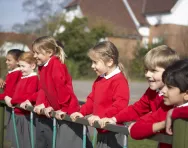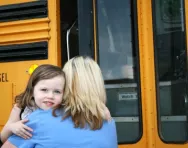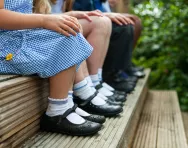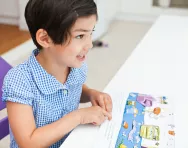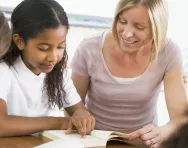Important update from TheSchoolRun
For the past 13 years, TheSchoolRun has been run by a small team of mums working from home, dedicated to providing quality educational resources to primary school parents. Unfortunately, rising supplier costs and falling revenue have made it impossible for us to continue operating, and we’ve had to make the difficult decision to close. The good news: We’ve arranged for another educational provider to take over many of our resources. These will be hosted on a new portal, where the content will be updated and expanded to support your child’s learning.
What this means for subscribers:
- Your subscription is still active, and for now, you can keep using the website as normal — just log in with your usual details to access all our articles and resources*.
- In a few months, all resources will move to the new portal. You’ll continue to have access there until your subscription ends. We’ll send you full details nearer the time.
- As a thank you for your support, we’ll also be sending you 16 primary school eBooks (worth £108.84) to download and keep.
A few changes to be aware of:
- The Learning Journey weekly email has ended, but your child’s plan will still be updated on your dashboard each Monday. Just log in to see the recommended worksheets.
- The 11+ weekly emails have now ended. We sent you all the remaining emails in the series at the end of March — please check your inbox (and spam folder) if you haven’t seen them. You can also follow the full programme here: 11+ Learning Journey.
If you have any questions, please contact us at [email protected]. Thank you for being part of our journey it’s been a privilege to support your family’s learning.
*If you need to reset your password, it will still work as usual. Please check your spam folder if the reset email doesn’t appear in your inbox.
What is an all-through school?
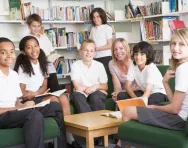
When you’re preparing for your tiny four-year-old to start school, the prospect of them rubbing shoulders in the playground with hulking Year 6s can be pretty terrifying. But a growing number of Reception and even Nursery children are joining schools that continue right up to Sixth Form.


Start a unique learning programme!
- Weekly programme for each school year
- Worksheets sent direct to your inbox
- Keeps your child's learning on track
According to the New Schools Network, around 25 per cent of schools opening in the near future could be all-through schools, providing education for both primary and secondary children under one roof.
What is an all-through school?
All-through schools are those that combine at least two stages of a child’s education – typically primary and secondary – in one establishment. Many also have Nursery classes and Sixth Forms, and admit children aged three to 19. Most children join the schools at Nursery or Reception age and continue there for their secondary education, or transfer from another primary at the start of Year 7.
All-through schools are sometimes spread across two or more sites, but some have both primary and secondary elements on one site – although the children are not together at all times. ‘You usually have separate site areas for primary and secondary children, so it’s well managed and not overwhelming for the younger ones,’ says Sarah Counter, headteacher of all-through school Canary Wharf College.
Although all-through schools are in a minority, they’re growing in popularity. There are 109 maintained all-through schools in England, excluding free schools, but 31 of these have opened since 2011 and a further 13 have been approved to open soon.
All-through schools manage themselves in different ways, but usually have a wider leadership team than a single school would have. ‘There are often separate heads of primary and secondary education to reflect the different specialisms, as well as people such as a head of special needs who works across the whole school,’ Sarah explains.
What are the educational benefits of all-through schools for primary pupils?
There are many benefits to all-through schooling for primary children. One of the main advantages is that because some teachers work across both the primary and secondary elements, younger children get access to the sort of specialist teaching that they don’t usually get in primary schools.
‘Our primary children have a class teacher who takes them for core subjects, but subjects like PE, music, art, science and languages are taught by teachers who specialise in those areas,’ Sarah says.
Children also benefit from the leadership and mentoring of older pupils. ‘Secondary pupils are given opportunities to read with children, help to look after them and run clubs and activities, and the younger children love being nurtured by them and learning from them,’ says Sarah.
Pastoral care tends to be a big priority for all-through schools, particularly for children with special educational needs. ‘When a child comes in at age four with a specific educational need, by the time they progress to the secondary element they are well known and understood, and that knowledge can be passed on easily to their new teachers,’ says Sarah.
Children also benefit from using secondary school facilities that primary schools rarely have, such as sports centres, music rooms and dance and drama studios.
What about for secondary pupils?
Primary age pupils are not the only ones to benefit from all-through schooling. ‘The big advantage for secondary pupils is that they don’t have to go through such a difficult period of transition at 11, so you don’t get the usual dip in enthusiasm and achievement,’ Sarah explains. ‘They go up to the secondary school with an established group of friends, and are familiar with the environment and many of the teachers.’
They’re also familiar with being taught by a number of different teachers even at primary level, so there’s less of a leap from having one primary school teacher to having a different person for every subject.
Secondary pupils benefit from being involved with the younger children as well. ‘They see it as a treat to be able to go and read with the primary children and help with their clubs, and this gives them leadership skills that look good on their CV and will serve them well in later life,’ Sarah adds.
Any drawbacks?
Every model of education has its flaws, and all-through schools are no exception. While transition to secondary can be easier for those children who have been at the school since Reception, it can difficult for new starters to join the school at this stage.
‘I think it is a harder transition for those children who come in at 11 and join an already established year group,’ agrees Sarah. ‘However, these difficulties can be overcome with a good buddying system and strong pastoral care. It’s the responsibility of the secondary phase to ensure new starters are well integrated.’
Some educationalists also worry that having Reception and even Nursery children in the same school as secondary students can be problematic. They claim that it’s impossible to have a seamless transition from primary to secondary, given the huge difference in ages, and that the youngest children may miss out on the nurturing environment of stand-alone nurseries and primary schools.
Overall, though, as more free schools and academies open up and have more freedom over how they structure themselves, it looks as if the all-through model looks set to go from strength to strength, with increasing numbers of children being educated in one place for their whole school career.
‘For me, the most rewarding thing is being able to see the effort we put into our primary children followed through into the secondary phase,’ Sarah says. ‘We don’t lose them to other schools, where they might not get the same care and educational provision, but can continue to ensure that they’re nurtured and developed into the next stage.’

